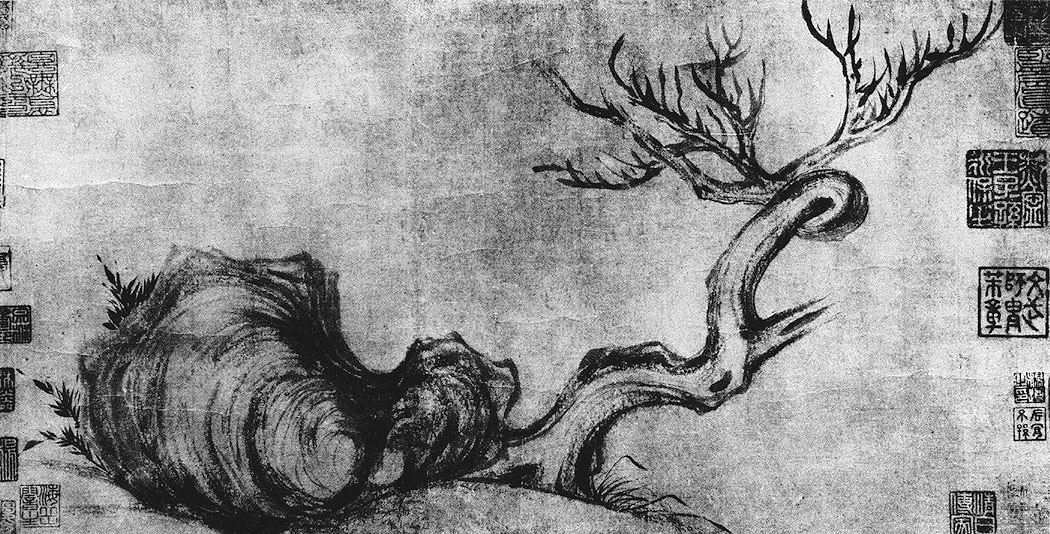
During the middle of the Northern Song scholars began to take up painting as one of the arts of the gentleman, viewing it as comparable to poetry and calligraphy as means for self expression. Brushwork in painting, by analogy to brushwork in calligraphy, was believed to express a person's moral character.
The scholars who took up painting generally preferred to use more individualistic and less refined styles of brushwork. These styles were relatively easier to master by those already familiar with the brush from calligraphy, and did not require the years of exacting training needed to succeed as a professional or court artist.
The eminent poet and statesman Su Shi (1037-1101) explicitly rejected the attempt to capture appearance as beneath the scholar. Paintings should be understated, not flashy. His painting of Rock and Old Tree, below, executed with a dry brush, exhibits rough qualities and does not aim at pleasure. The painting is more akin to an exercise aiming to improve and develop calligraphic skill than the sorts of paintings done by contemporary court painters. Emphasizing subjectivity, Su Shi said that painting and poetry share a single goal, that of effortless skill. |
|||
|
|||
|
Does Su Shi's painting seem more poetic than other paintings you have looked at so far? |
|||
|
|
|||
|
|||
|
Scholars' paintings of landscapes have been dealt with in the section on landscape painting, organized by period. Here we deal with two other types of subject matter that scholar painters chose: figures and animals and plants. |
|||
|
|
|||



